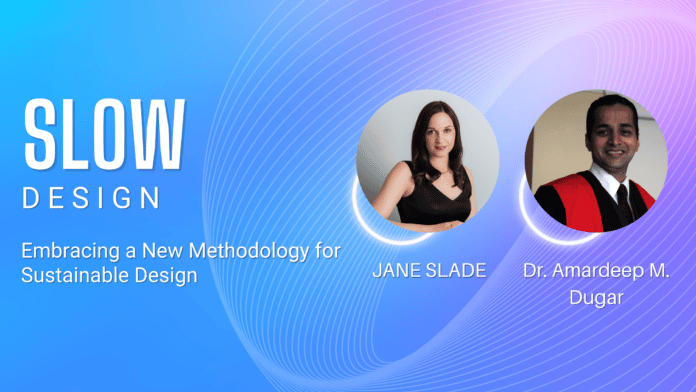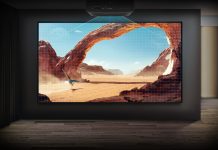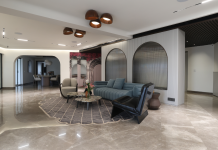
Slow Design can be defined as a design process that is deeply conscious of the lifespan, materials and processes used in the creation of its end product, resulting in ecological soundness and consumer enjoyment. Slow Design emerged as a new paradigm for sustainable design, where design balances socio-cultural and individual needs with environmental well-being. Sustainable design has always been considered the ‘trinity’ of economy, ecology and equity. However, design has often been more reactive to the needs of the economy, commerce, and the marketplace. Literature indicates that none of the economies – ‘industrial,’ ‘consumer’ or ‘knowledge’ – are equally or equitably distributed; thereby creating a need for a new sustainable design paradigm to not only ‘save the planet’ but to ‘save designers’ and the professional reputation of design. Time and again economy-driven designs have proven not to put the environment first. One of humanity’s most critical next steps will be decoupling design decisions from economics.
Slow, as a philosophy, stands up against the possible degradation of life through fast consumerism and constant want. Fast, in opposition to slow, does not necessarily mean physical speed but more the hurrying along of natural pace. Designs created through the slow process are developed with actual need and well-being in mind, using renewable or recycled materials and energy, and with their futures thoroughly mapped – be it biodegradability or recycling, following zero-waste or cradle-to-cradle philosophies. Slow does not conform to shortening time spans allocated to life cycles of products in the marketplace; it does not celebrate the smallest, biggest, and fastest; however, it does celebrate balancing anthropocentric needs with planetary needs and the de-commodification of time. ‘Slow’ because the time constraints of economic growth and expediency are removed, and design goes beyond the fabrication of things for the marketplace, thus avoiding competition in an increasingly accelerated game of technological progress, brand positioning and commercial globalization.
Slow thinking in lighting design
Slow Design is where lighting professionals can experience real freedom. When lighting improves our lives, while simultaneously improving our societies and cultures when lighting contributes to restoring the health of our environment. As the lighting industry is morphing into an IoT concept, based on seamless digital interconnectivity across all facets of human life, acceleration and innovation are key to survival. Smart city concepts are leading lighting into the Internet of Things where connected lighting enables digital technologies that are critical to the expansion of city services. All these paradigm shifts in lighting have seriously challenged traditional ways of designing with light. In such a time of change, embracing these agents of change and developing a new standard for lighting design seems to be a way forward. This new standard requires universally agreed upon metrics, measurement methods, limits and criteria that would set strong baselines for energy efficiency and functional performance, and address key parameters of connected lighting. Slow thinking will allow lighting professionals to focus on the decisions, research, or processes that are the most vital for developing such a standard.
Slow design principles for lighting design
Six principles of slow design have been postulated to enable lighting professionals to better understand their own identity as a designer, reflect upon their own design processes, evaluate tangible outcomes, and imagine new scenarios, namely: Enlarge, Divulge, Engage, Contemplate, Participate, and Evolve. These principles are used to carefully and continuously explore lighting design from the perspective of slow design. Slow principles can support appropriateness, as they allow for time throughout the design process for thinking about the intended design outcomes and how best to reach those goals while keeping the integrity of the design intact. These principles were put forward as a set of criteria against which designers can interrogate and appraise their ideas, processes, motives, and outcomes; in effect creating a ‘shifting brief’ and a mutable outcome as the design process unfolds. Lighting professionals can return to these principles several times during the design process, and apply them again to evaluate the final design outcome and better understand its potential future impacts.
Slow principle 1– Enlarge
Slow design enlarges the real and potential expressions of environments beyond their perceived functionalities, physical attributes and lifespans. Lighting environments can go beyond mere functional or physical attributes such as energy benefits, and consider temporal attributes and the form of interactions that take place with users over time. Temporal attributes can include an expansion into user interactions that permeate into daily life.
Slow principle 2 – Divulge
Slow design divulges the often forgotten or missed experiences in everyday life, including materials and processes that can be easily overlooked in the creation or existence of designs. Augmented Reality (AR) is a technology that brings components of the digital world into the real world through immersive sensations. Introducing AR-enriched lighting systems into physical architecture and immaterial space can divulge the under-observed phenomena of the built environment.
Slow principle 3 – Engage
Slow design engages in open-source and collaborative processes, relying on sharing, cooperation and transparency of information so that designs may continue to evolve into the future. Cross-disciplinary collaborations and interdependency between IoT and lighting systems can make geospatial indoor navigation services such as way-finding and asset tracking more affordable with their combined power and geographic density.
Slow principle 4 – Contemplate
Slow design environments and experiences induce contemplative consumption. As lighting control interfaces facilitate lighting consumption, they can slowly reveal user patterns thus rendering them increasingly precious to the user over time.
Slow principle 5 – Participate
Slow design is a participatory design process, where users actively exchange and embrace ideas so as to foster social accountability and enhanced communities. Smart cities can gather even more momentum with lighting as city dwellers can be invited to connect with the histories and patterns of lighting through empirical observation, sensory awareness and intuitive imagining.
Slow principle 6 – Evolve
Slow designs are behavioural change agents promoting richer experiences that evolve from the dynamic maturation of environments and systems over time. Lighting systems can be designed as co-sharing tools for reorganising neighbourhoods, and instigating our relationship with our neighbours and our connection to the natural environment.
Conclusion:
The incorporation of lighting with slow features requires a larger calculated vision and value that looks far beyond the old Return-On-Investment (ROI) energy story. While skeptics may argue against the financial viability of these slow features, there is a good possibility that economic interests will soon gather around these features. The simple reason being that people, societies, and cultures in the future will purchase products, services, and environments that provide deep satisfaction to human needs while also scoring positively on environmental and socio-cultural balance sheets.















